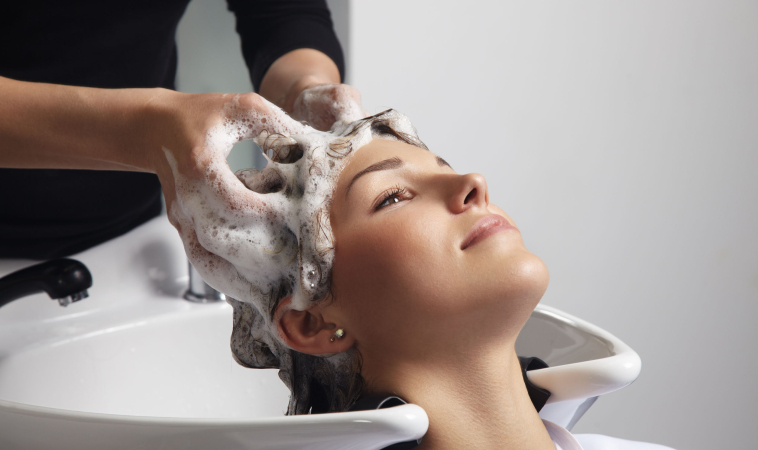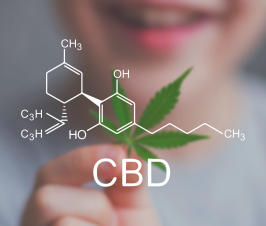A visit to the spa is the perfect way to relax, relieve stress and pamper yourself. While you may leave feeling rejuvenated, what you may not realize is that most popular spa treatments involve exposure to harmful chemicals. You might think that you are doing your body a favor, but in some cases, you may have done more harm than good. To learn more about potential dangers, keep reading for a list of spa treatments, the chemicals they use and potential side effects.
Nail polish
As you might expect, salon and spa workers are actually at the greatest risk because of constant exposure to chemicals. Nail polish alone contains dibutyl phthalate, formaldehyde and toluene, a combination that is sometimes referred to as the “toxic trio.” These chemicals can cause a wide range of uncomfortable physical symptoms that include headaches, nausea, irritated eyes, skin and throat, and damage to the liver and kidneys. Scientists are also studying the effects of these chemicals on unborn children.
Any reputable spa will take precautions to limit exposure and ensure the safety of both workers and customers. An adequate and properly running ventilation system is key to removing chemicals in the air and limiting exposure. However, even the most stringent standards can’t erase the fundamental fact that nail polish, nail polish remover, nail hardeners and other products contain a wide variety of toxic chemicals.
Spray tan
If you have been turning to spray tans to avoid the harmful effects of the sun or tanning booths, you might not be doing yourself a favor. Spray tans use the chemical dihydroxyacetone (DHA), which adheres to dead skin cells and causes the desired color change. Unfortunately, researchers simply don’t know enough about the long-term effects of using spray tans. What they do know is that inhaling DHA has been shown to increase the formation of free radicals, which cause of cancer.
Chloramines in Steam
You would think that the steam room would be the safest place in the spa. After all, steam rooms have been used to centuries to improve circulation, relieve muscle aches and actually detoxify the skin. Ironically, it is the chemicals that are supposed to kill bacteria and improve health and safety that are actually the culprits. Chloramine is a chemical that is commonly used to disinfect water supplies. Unfortunately, chloramine easily undergoes chemical transformations. It interacts with organic materials found in water and changes according to temperature and other outside factors. While it may help to purify water, it can also be hard to control and keep in a “safe” form. Some people may simply experience temporary respiratory discomfort, while those with problems like asthma may experience more severe symptoms after inhaling chloramine.
Hot Tub Chemicals
The same conditions that lead to the presence of chloramine in steam rooms are also present in hot tubs, which can create problems for anyone with respiratory problems. The warm, steamy environment creates the perfect place for bacteria to grow and thrive. In an effort to eliminate bacteria, chemicals like chlorine are added to the water. However, it doesn’t take long for chlorine to interact with human materials and undergo a chemical change that creates the irritant chloramine. Anyone with existing respiratory problems will notice worsening symptoms. A relaxing soak in the hot tub can turn into exacerbate existing conditions.
Brazilian Blowout
While spas in the Unites States are still technically allowed to offer Brazilian blowouts, the hair treatment is so toxic that it has actually been banned in Canada and the European Union. There are a wide range of different products on the market that are used in combination with a hair iron to straighten hair for up to three months. The problem is that the vast majority of products contain high levels of formaldehyde that are well above standards set forth by the federal Occupational Safety and Health Administration (OSHA). To makes matters worse, there has been a rash of problems with companies falsely labeling their products as “formaldehyde free.” Ultimately, exposure to a variety of chemicals, including formaldehyde is dangerous to both customers and salon workers.
Hair Dye
Smell is usually a good indication of whether a substance is full of chemicals and potentially toxic and if you have ever been around hair dye, you know it has a very strong and distinct smell. The fact that pregnant women are advised to stop dying their hair is probably also a good sign that dye can be dangerous, but if that isn’t enough to convince you, consider the fact that hair dye contains over 115 potentially harmful chemicals. Every product uses a different formula, but some of the most popular ingredients include: PPD or para-phenylenediamine, ammonia, parabens, lead acetate and resorcinol. At best, these chemicals are known to cause skin irritation. As worst, they are linked to cancer and endocrine system problems.
Hair Spray
Many of the same harmful chemicals that are found in other salon and spa products are also present in hairspray. In addition to the familiar formaldehyde, hair spray also contains: artificial fragrances, aerosol propellants, polyvinylpyrrolidone and other hard to pronounce chemicals. Individually, these chemicals have been linked to a variety of health problems including cancer. Combined, the risk of health problems increases, especially among those who are exposed on a daily basis.
Fragrances
If you stop and think about it, the world is already full of so many natural smells, it almost seems silly that we cover ourselves in artificial fragrances, but it is big business. From lotions and hair spray to perfumes and body sprays, out beauty routines are filled with artificial scents. The bad news is that most of them are applied to the skin which is not only the body’s largest organ, but also a gateway to the bloodstream. On average, around 95% of artificial fragrances are made up of chemicals that can enter your bloodstream and wreak havoc. The good news is that there are plenty of natural options that smell great without all the chemicals.
Parabens
Next to formaldehyde, parabens are one of the most pervasive chemicals in spa products. They are used as preservatives to extend the shelf life of products. Perhaps most disturbingly, there are strong links between parabens and breast cancer. Parabens are not usually listed on the label, so be sure to look for products labeled “paraben free”
As consumers start to learn more about the chemicals in spa products and treatments, they have also begun to demand safer alternatives. If consumers aren’t willing to pay for treatments that are laced with chemicals, spas are forced to respond and provide organic products that produce the same results without any of the harmful side effects. The truth is that there are plenty of safe, natural alternatives. My best advice is to read labels, ask questions and be an informed consumer to protect yourself from any chemical exposure. You can learn more about cancer causing chemicals in home and beauty products, and how to avoid them at thecancersummit.com
 Razi Berry, Founder and Publisher of Naturopathic Doctor News & Review (ndnr.com) and NaturalPath (thenatpath.com), has spent the last decade as a natural medicine advocate and marketing whiz. She has galvanized and supported the naturopathic community, bringing a higher quality of healthcare to millions of North Americans through her publications. A self-proclaimed health-food junkie and mother of two; she loves all things nature, is obsessed with organic gardening, growing fruit trees (not easy in Phoenix), laughing until she snorts, and homeschooling. She is a little bit crunchy and yes, that is her real name.
Razi Berry, Founder and Publisher of Naturopathic Doctor News & Review (ndnr.com) and NaturalPath (thenatpath.com), has spent the last decade as a natural medicine advocate and marketing whiz. She has galvanized and supported the naturopathic community, bringing a higher quality of healthcare to millions of North Americans through her publications. A self-proclaimed health-food junkie and mother of two; she loves all things nature, is obsessed with organic gardening, growing fruit trees (not easy in Phoenix), laughing until she snorts, and homeschooling. She is a little bit crunchy and yes, that is her real name.

















